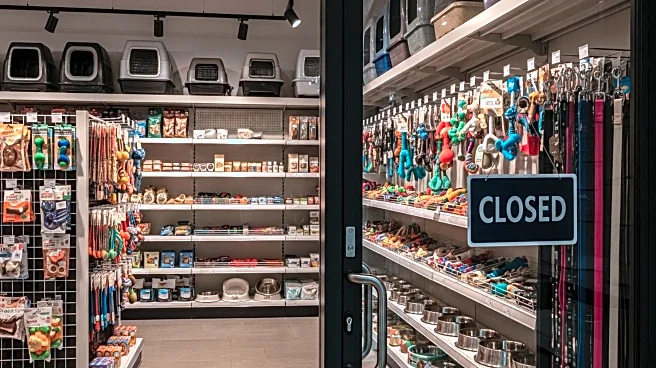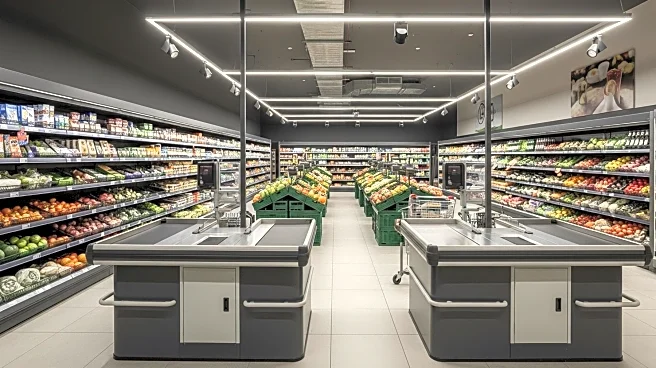What's Happening?
Petco has announced the permanent closure of two stores in Massachusetts as part of a broader plan to shut down 25 locations across the United States by the end of 2025. The closures in Topsfield and Milford are part of Petco's strategy to streamline operations during a transformative period for the brand. The company aims to focus on offering new products and services to attract customers to physical stores, despite the growing trend of online shopping. Petco's decision reflects the challenges faced by large retailers in adapting to changing consumer behaviors.
Why It's Important?
The closure of Petco stores in Massachusetts highlights the ongoing struggles of brick-and-mortar retailers in the face of increasing online competition. This move is part of a larger trend of retail downsizing, as companies like Bed Bath and Beyond and Joann Fabric have also reduced their physical presence. The closures may impact local economies and employment, as well as consumer access to pet care products and services. Petco's strategy to transform its business model underscores the need for retailers to innovate and adapt to survive in a rapidly changing market.
What's Next?
Petco plans to continue its nationwide downsizing, with additional store closures expected by the end of 2025. The company will focus on enhancing its product offerings and in-store experiences to compete with online retailers. As Petco navigates this transformative period, it may explore partnerships or new business models to maintain its market position. The impact of these closures on local communities and the broader retail landscape will be closely monitored by industry analysts.
Beyond the Headlines
The closures reflect broader economic challenges faced by the retail industry, including shifts in consumer preferences and the rise of e-commerce. Petco's strategy to focus on in-store experiences may set a precedent for other retailers seeking to differentiate themselves in a competitive market. The company's efforts to innovate could influence future retail trends and consumer expectations regarding physical shopping experiences.










